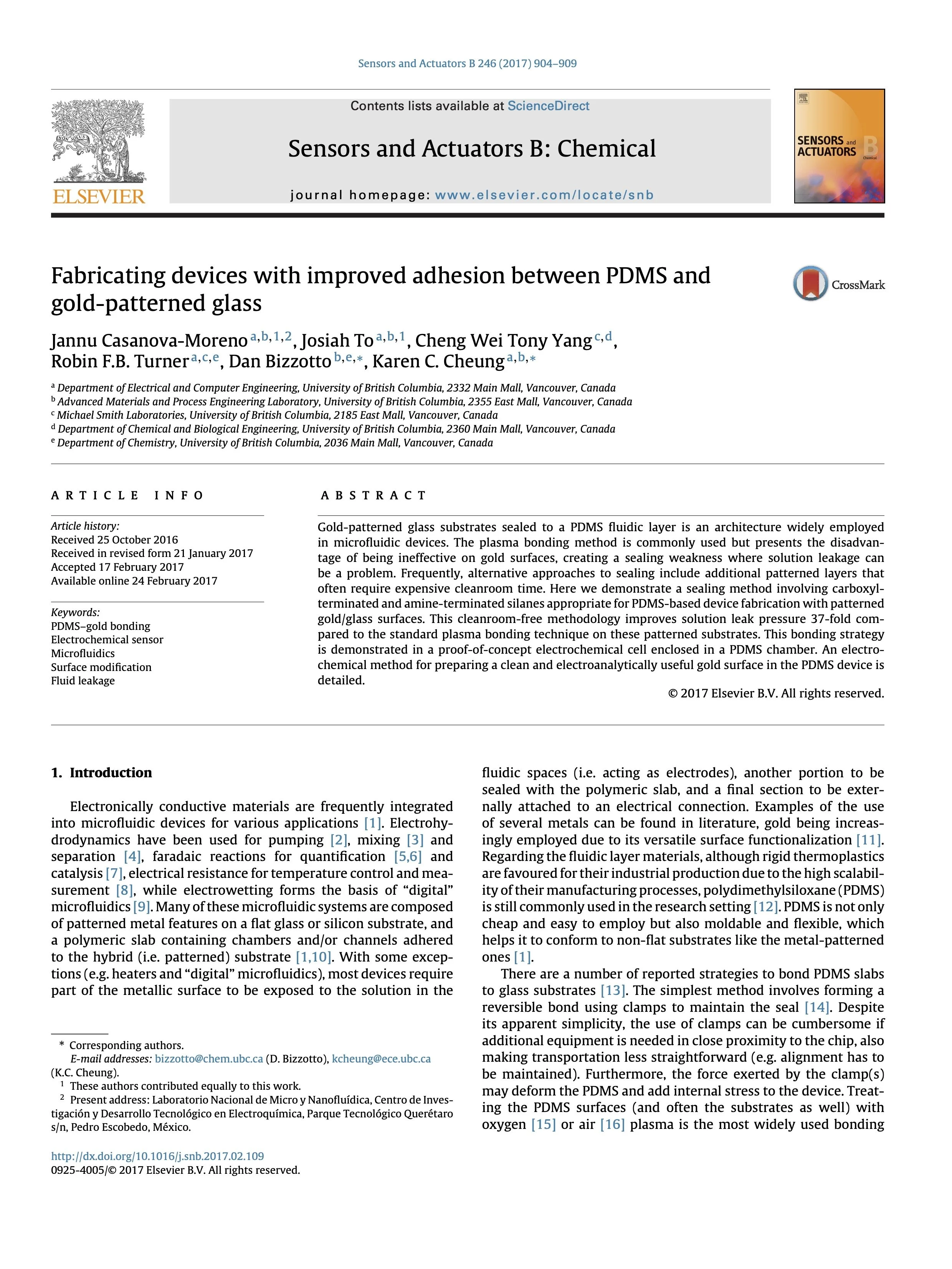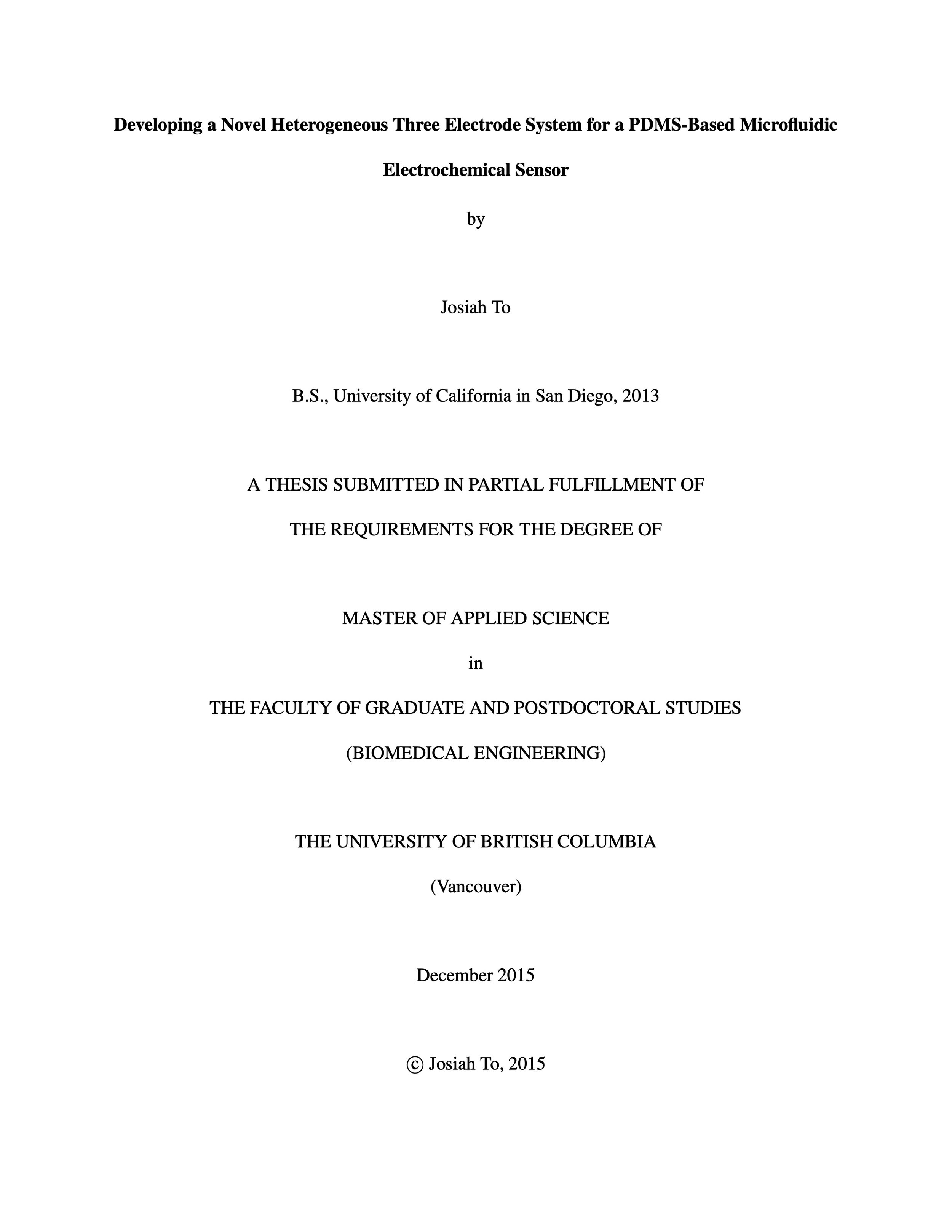
Point-of-Care Microfluidic Electrochemical Biosensor
Designing and building a point-of-care device to detect bacterial DNA using nucleic acid amplification testing and electrochemical DNA probes.
EXPLORE THE PROJECT
Develop a point-of-care diagnostic device that can detect bacterial DNA using nucleic acid amplification testing (NAAT) techniques
Use quantitative electrochemical techniques to detect electrochemical DNA probes
Create a bio-inert incubation chamber that can withstand thermocycling
PROJECT GOALS
HOW IT WORKS
Device Overview
This was my Master of Applied Science (MASc) thesis project that I completed in 2015 at the University of British Columbia (UBC) in Vancouver Canada. You can read the full thesis here.
The device is a microfluidic thermocycling bio-incubator for point-of-care nucleic acid amplification testing with quantitative electrochemical DNA probes. The device used 3 different materials for quantitative electrochemistry: a gold counter electrode, a carbon working electrode, and silver/silver-chloride reference electrode. Additionally, we developed a novel bonding method to adhere a polydimethylsiloxane (PDMS) reaction chamber with SU-8 photoresist to seal the bio-incubator during electrochemical operation. Ultimately the device was evaluated using a potentiostat to generate and measure cyclic voltammetry responses in a solution containing 5uM carminic acid at both room temperature and at 65 degrees Celsius.
I used a combination of cleanroom techniques such as photolithography and electron beam deposition, soft lithography, screen printing, electrodeposition, and CAD modeling to develop the device.
HOW ITS BUILT
CAD Model
Chip design that incorporates the working, counter, and reference electrode in a chip design.
Photolithography and Electron beam deposition
Mask used in photolithography and electron beam deposition to create the base level electrodes, counter electrode, and connection leads.
Microscopic view of the alignment markings to help correctly position masks for different layers
Screen Printing
Screen printing method using carbon electroactive inks for a working electrode.
Alignment marks to correctly position different mask layers.
Electrodeposition
The reference electrode was fabricated using electrodeposition of Ag/AgCl.
Microscopic view of the reference electrode demonstrating a smooth surface with no large crystals.
Novel bonding method between PDMS biochamber and SU-8 photoresist
Novel bonding method using TMS-EDTA/APTMS. The surface of the PDMS bio-chamber is coated with a silane while the chip is coated is with TMS-EDTA.
Bonded microchip using the TMS-EDTA/APTMS bonding method.
RESULTS
Final Device
This is the final 3-electrode system for PDMS based microfluidic electrochemical biosensor
Cross sectional view of of the 3-electrode system in the microfluidic biochamber
Evaluating Bond Strength
Results of the novel bonding method indicating superior bonding using the TMS-EDTA/APTMS method to prevent leakage through the leads as opposed to air plasma bonding, which significantly leaks due to the lack of bonding between PDMS and the gold leads.
You can read more about our novel silane bonding method and my thesis work by clicking on the links below:

